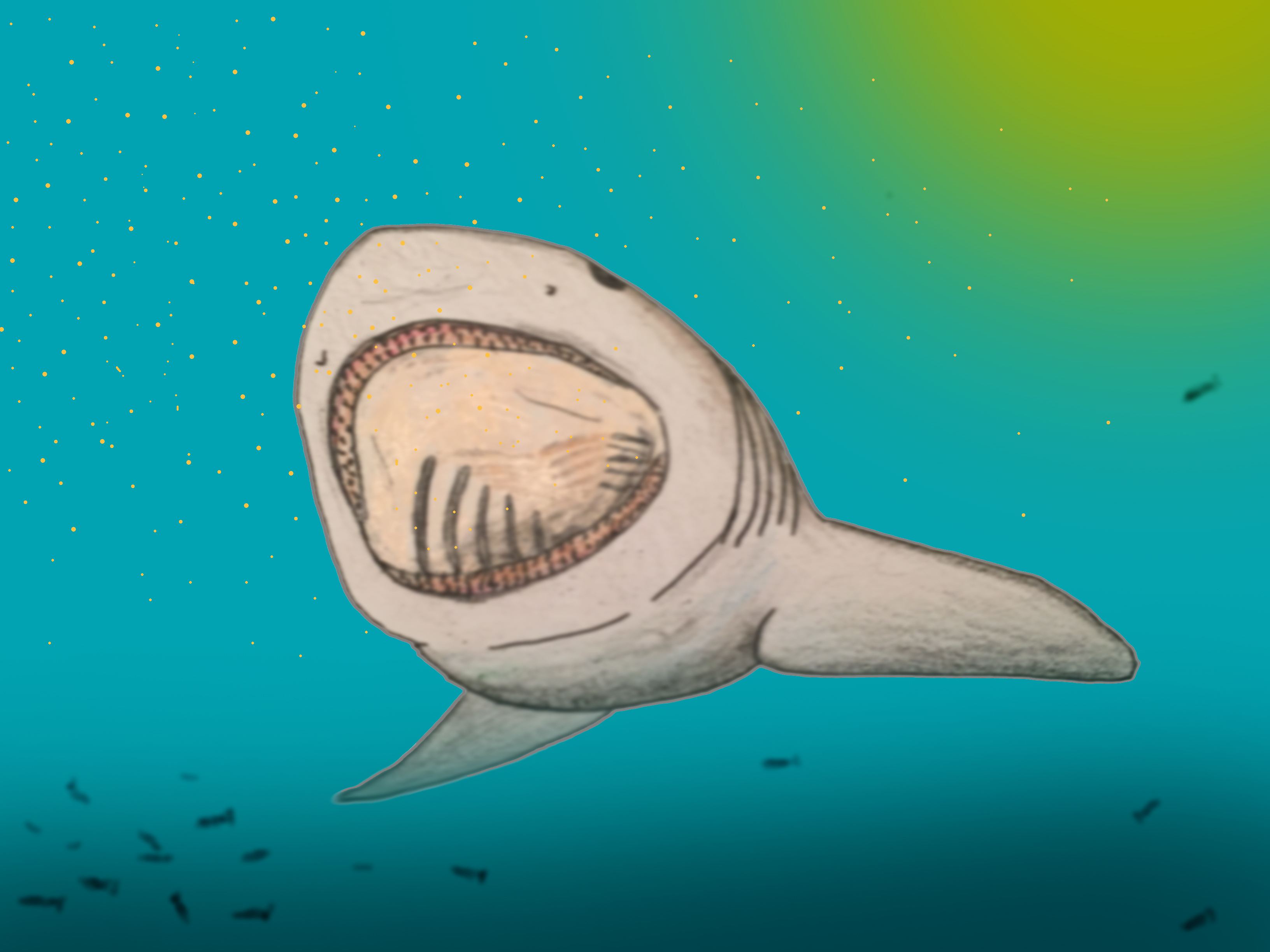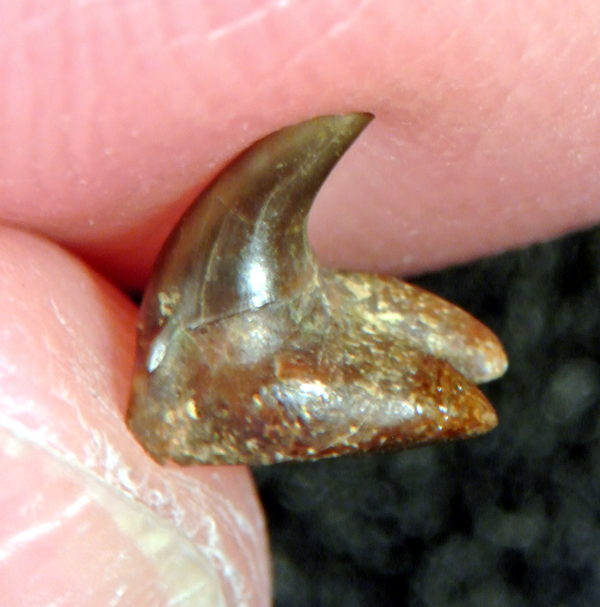 DePaul University paleobiologist Kenshu Shimada’s rendering of a Pseudomegachasma shark hypothesizes it had a large mouth with many small teeth. (Image courtesy of Kenshu Shimada) DOWNLOAD
DePaul University paleobiologist Kenshu Shimada’s rendering of a Pseudomegachasma shark hypothesizes it had a large mouth with many small teeth. (Image courtesy of Kenshu Shimada) DOWNLOADCHICAGO — An international team of scientists has discovered a new lineage of extinct plankton-feeding sharks, Pseudomegachasma, that lived in warm oceans during the age of the dinosaurs nearly 100 million years ago. The fossil sharks had tiny teeth very similar to a modern-day, plankton-eating megamouth shark.
 Researchers, including DePaul University paleobiologist Kenshu Shimada, found the tiny, hook-shaped teeth of the prehistoric Pseudomegachasma shark in the U.S. and Russia. (Photo courtesy of Kenshu Shimada) DOWNLOAD
Researchers, including DePaul University paleobiologist Kenshu Shimada, found the tiny, hook-shaped teeth of the prehistoric Pseudomegachasma shark in the U.S. and Russia. (Photo courtesy of Kenshu Shimada) DOWNLOAD
The study, "A new clade of putative plankton-feeding sharks from the Upper Cretaceous of Russia and the United States," is published in the September issue of the Journal of Vertebrate Paleontology.
Lead author, Kenshu Shimada, professor of paleobiology at DePaul University, said the findings are based on newly collected tiny fossil teeth, as well as a reinterpretation of previously reported specimens from Cretaceous rocks in the U.S. and Russia.
 DePaul Univeristy paleobiologist Kenshu Shimada and a team of international scientists have discovered a new genus of prehistoric, plankton-eating shark, the Pseudomegachasma. (Photo courtesy of Kenshu Shimada) DOWNLOAD
DePaul Univeristy paleobiologist Kenshu Shimada and a team of international scientists have discovered a new genus of prehistoric, plankton-eating shark, the Pseudomegachasma. (Photo courtesy of Kenshu Shimada) DOWNLOAD
“The study is significant because Pseudomegachasma would represent the oldest known plankton-feeding shark in the fossil record,” said Shimada. He added that these sharks would have evolved independent of the four known lineages of modern-day planktivorous cartilaginous fishes: the megamouth sharks, basking sharks, whale sharks, and manta rays.
Pseudomegachasma means “false megamouth shark” due to its dental features, which are superficially nearly identical to the modern-day plankton-eating megamouth shark or Megachasma that evolved much later in time. The new genus is represented by two extinct species, Pseudomegachasma casei from Russia and Pseudomegachasma comanchensis from the U.S., which evolved from a group of extinct sandtiger sharks that likely had a fish-eating diet.
Shimada, who is also affiliated with the Sternberg Museum of Natural History in Kansas, conducted this research with co-authors Evgeny Popov, Saratov State University in Russia; Mikael Siversson, Western Australian Museum; Bruce Welton, New Mexico Museum of Natural History and Science; and Douglas Long, St. Mary’s College and California Academy of Sciences.
###
Source:
Kenshu Shimada
KSHIMADA@depaul.edu
(773) 325-4697
Media Contact:
Kristin Claes Mathews
kmathew5@depaul.edu
312-241-9856